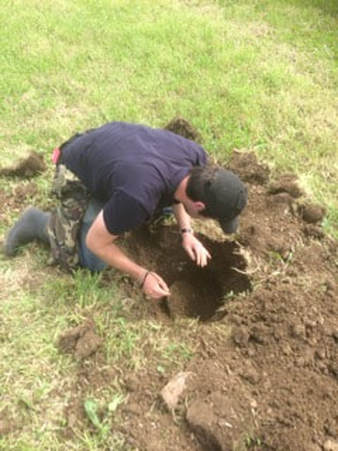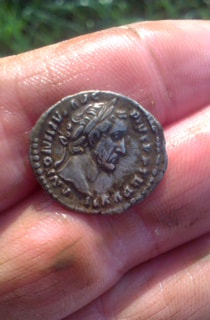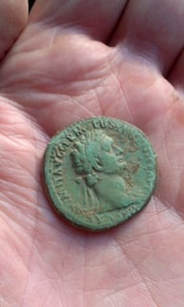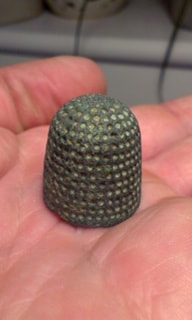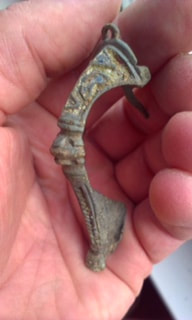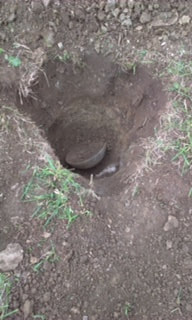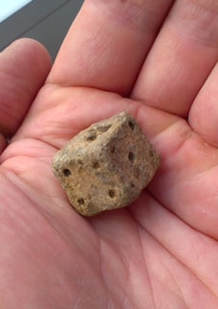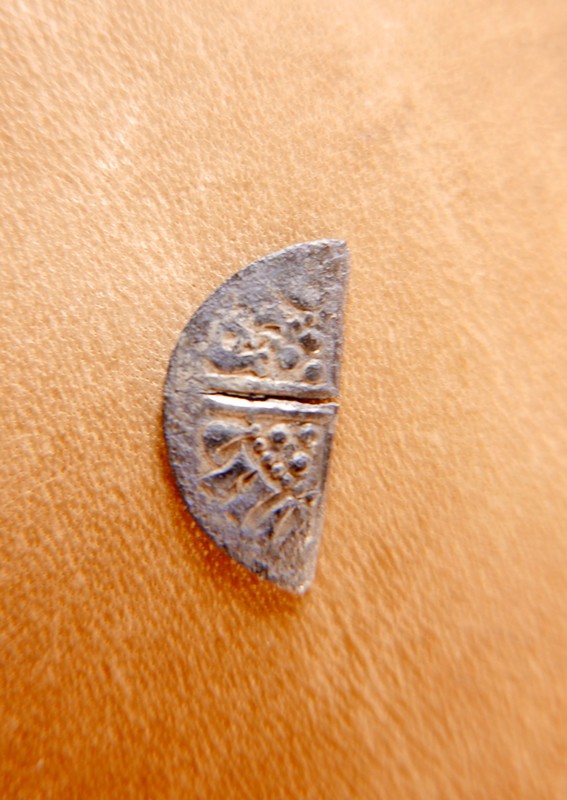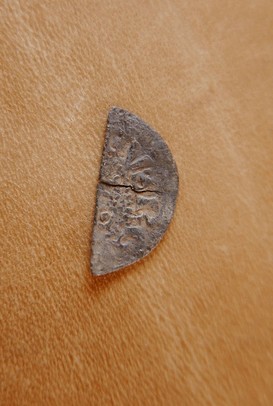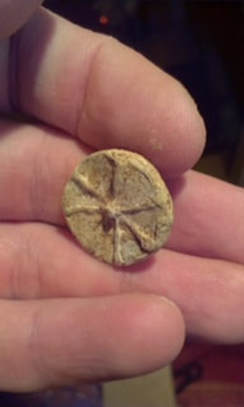Finds on Box's Roman Road Andrew Harrison and Mark Smith June 2017
|
Metal Detecting
Cousins, Andrew Harrison and Mark Smith, are metal detectors who have been investigating finds along the Roman Road which still forms the southern boundary of the parish in the area of Hatt. The road was called the Via Julia by the Romans and we know that it was built early in the first century of Roman occupation as a military route linking Mildenhall (Marlborough) with Bath. There has never been a modern-day archaeological investigation of the area but the soil has been well-tilled over the years and has thrown up a number of finds. Andrew and Mark emphasise the need to get permission from the landowner and to record discoveries in careful and systematic way. Right: Mark excavating the Roman bowl |
The finds on the Roman Road are not valuable as such but they enable us to understand the history of Box in more detail.
|
Roman
Coins Antoninus 138-161 Domitian 81-96 |
As we might expect, a number of coins were found on the road, presumably part of the Roman soldier's pay which was dropped.
Seen Middle: Antoninus silver denarius. Antoninus was the emperor who built the Antonine Wall in Scotland. Right: Domitian coin dating from the first century which may indicate how early the Road was built. Domitian has been characterised as a tyrant who fostered a cult of self-glorification. |
Roman Life
There was no accommodation on the road in the Box area and soldiers would have marched on to Bath, pausing only for a refreshment break. Even so, wagons filled with their possessions would have accompanied them and possessions slipping off the carts included items needed for repairs to their uniforms, eating utensils and playtime objects.
There was no accommodation on the road in the Box area and soldiers would have marched on to Bath, pausing only for a refreshment break. Even so, wagons filled with their possessions would have accompanied them and possessions slipping off the carts included items needed for repairs to their uniforms, eating utensils and playtime objects.
Above left to right: Thimble for repairs to uniform and sandals; Roman broach; Roman bowl still in the soil; Roman dice for entertainment
Later Finds
The road was used for centuries after the Roman period and even became a farm track called Bulcot Lane. It was particlularly used in the medieval period when trade and travel became easier. The photos below show (left and middle) a Henry III voided longcross penny cut into half to be a halfpenny and (right) a late medieval lead token used to buy goods instead of coinage when currency was debased by clipping coin edges or using impure metal to bulk out silver and gold species.
The road was used for centuries after the Roman period and even became a farm track called Bulcot Lane. It was particlularly used in the medieval period when trade and travel became easier. The photos below show (left and middle) a Henry III voided longcross penny cut into half to be a halfpenny and (right) a late medieval lead token used to buy goods instead of coinage when currency was debased by clipping coin edges or using impure metal to bulk out silver and gold species.
